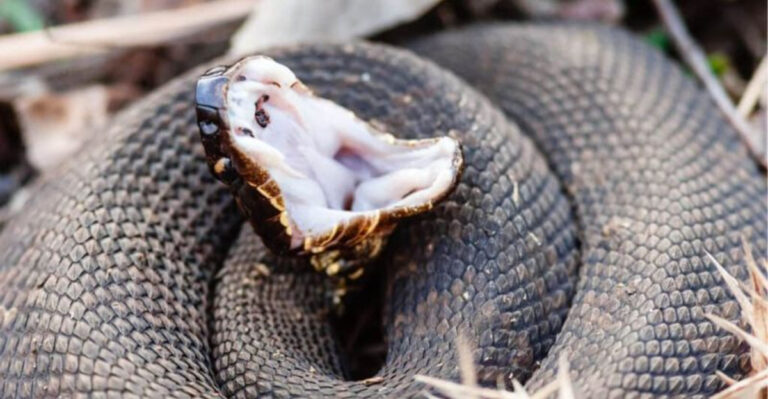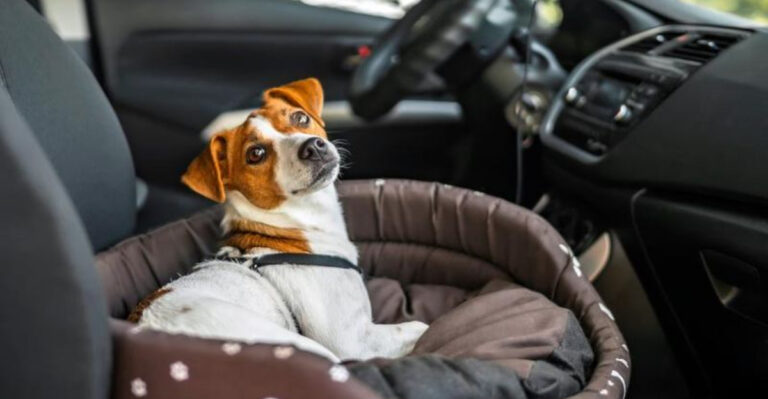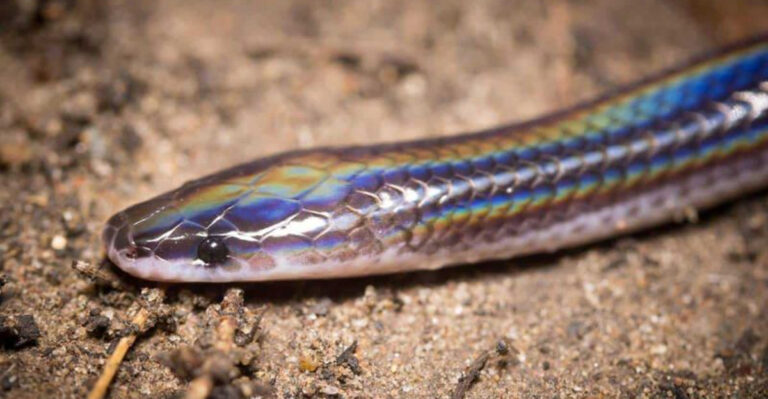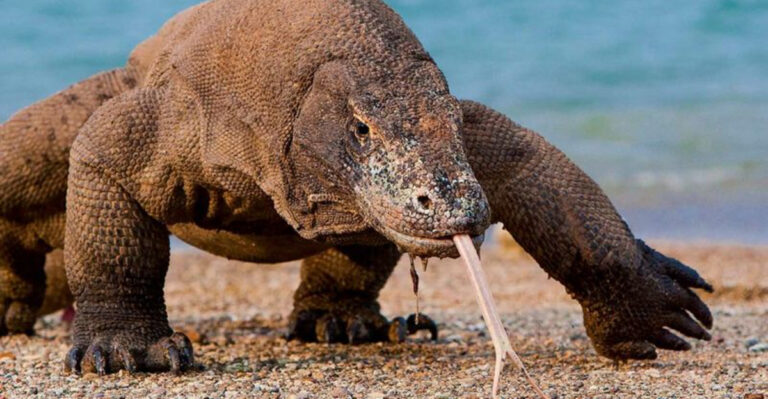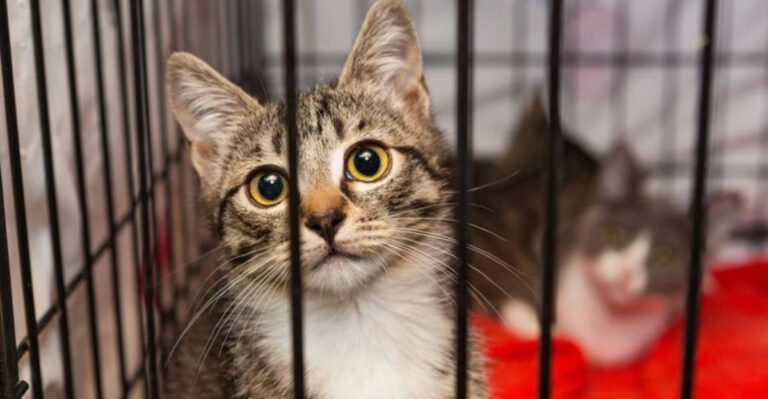17 Clear Signs Your Cat Feels Unsafe At Home
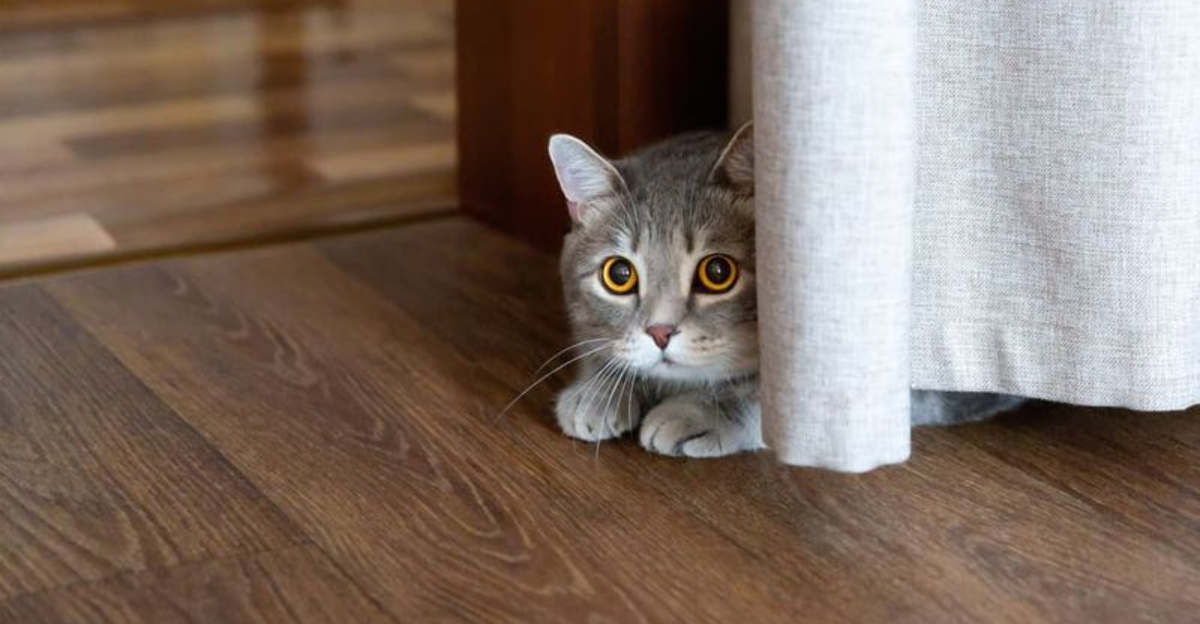
Cats communicate their feelings through subtle behaviors and body language. When your feline friend doesn’t feel secure in their environment, they’ll send you clear signals that something’s wrong.
Recognizing these warning signs early can help you create a safer space for your cat and strengthen your bond.
1. Flattened Ears And Dilated Pupils

Those airplane-flat ears aren’t just adorable – they’re your cat’s distress signal! When combined with wide, dilated pupils, your cat is broadcasting serious discomfort.
This defensive posture prepares them for potential threats. The dilated pupils allow more light in, giving them better vision if they need to escape quickly.
2. Increased Aggression
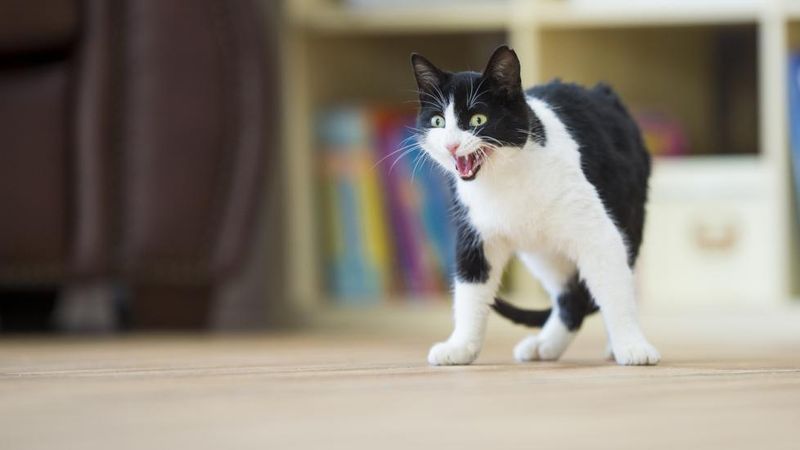
Suddenly getting hissed at by your normally sweet cat? Unexpected aggression often stems from fear, not anger. When cats feel cornered or unsafe, they may lash out defensively.
This behavior change can manifest as swatting, biting, or growling – even toward beloved humans. It’s their way of creating protective distance when feeling vulnerable.
3. Excessive Grooming
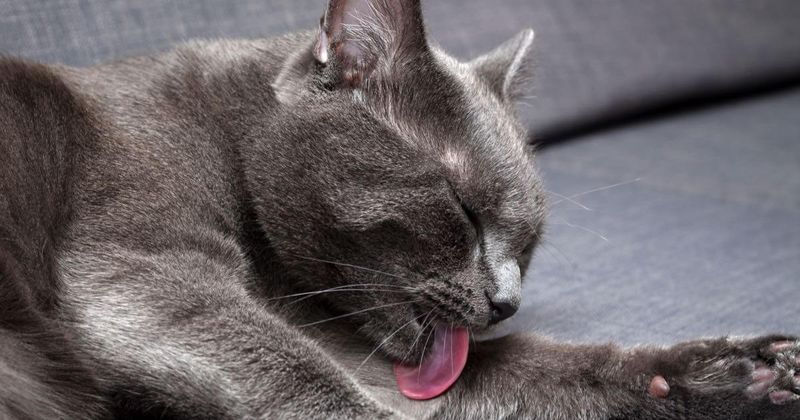
Bald patches appearing on your cat’s coat? Stress-induced overgrooming happens when anxiety triggers compulsive licking and hair-pulling behaviors.
Focus on areas like belly, legs, or tail base often indicates psychological distress. This self-soothing mechanism helps cats cope with feelings of insecurity, but can lead to skin problems and infections.
4. Hiding More Than Usual
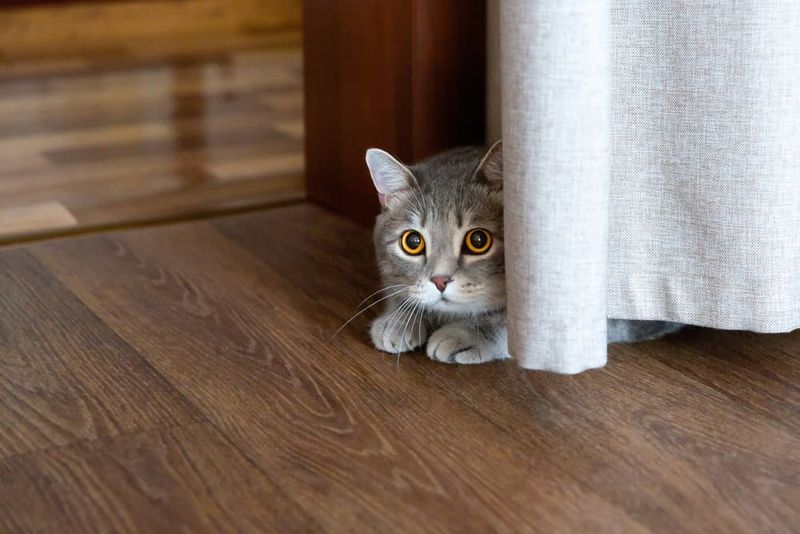
Ever noticed your confident kitty suddenly vanishing for hours? Excessive hiding – under beds, in closets, or behind furniture – often signals fear or anxiety.
Cats retreat to concealed spots when they don’t feel safe in open areas. This natural self-preservation instinct kicks in when something in their environment feels threatening.
5. Urinating Outside The Litter Box
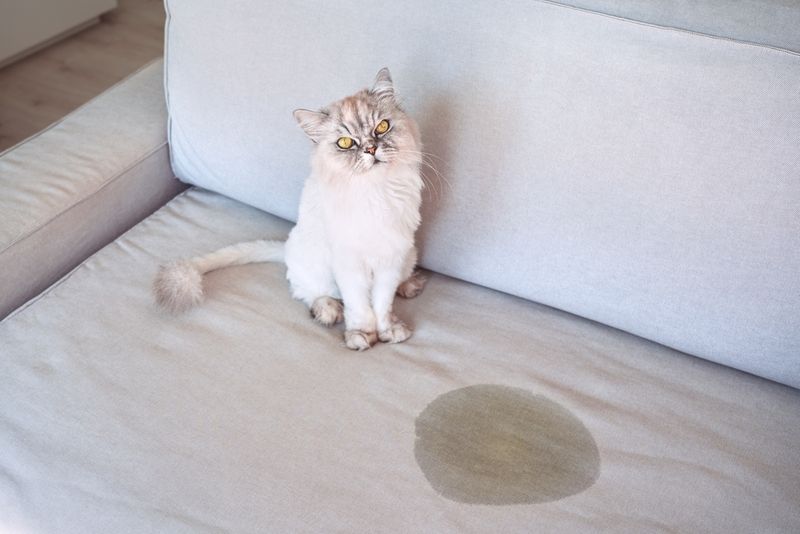
Finding surprise puddles around the house? Before assuming it’s behavioral spite, consider fear as the culprit. Cats often avoid litter boxes when they feel vulnerable while using them.
The location might feel exposed or threatening. Alternatively, they may be marking territory with urine to create familiar scents when feeling insecure in their environment.
6. Puffed-Up Tail And Fur
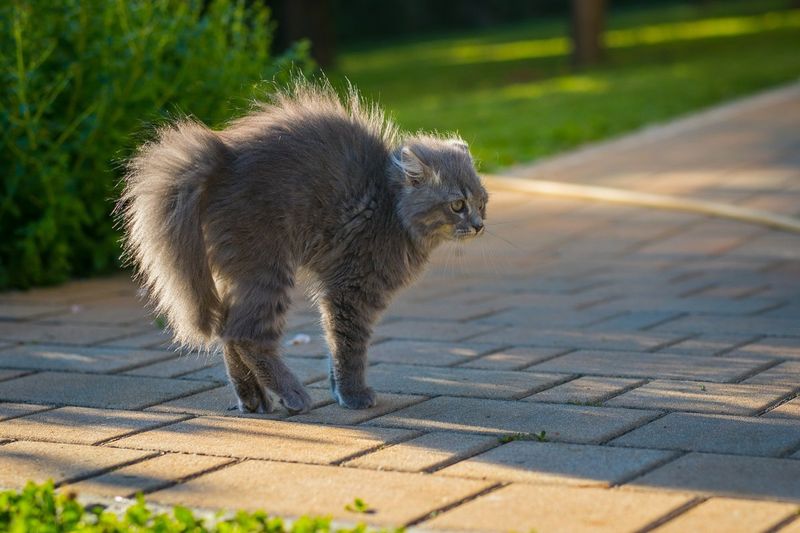
That bottle-brush tail isn’t a fashion statement! When cats puff up, they’re trying to appear larger to intimidate potential threats.
This involuntary reaction occurs when their fight-or-flight response activates. Their hair stands on end (piloerection), creating the illusion of increased size – a clear sign they’re feeling seriously threatened.
7. Low Body Posture
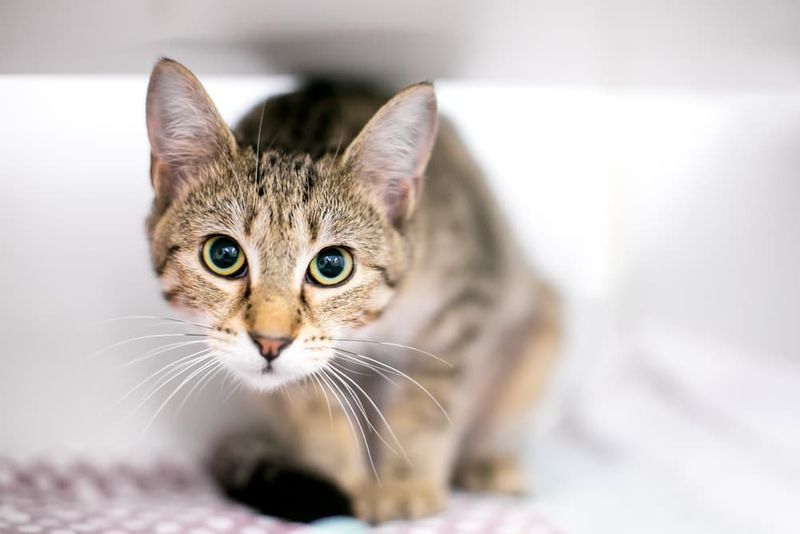
Notice your cat crouching close to the ground? This shrinking behavior – lowered head, tucked tail, and compressed body – reveals profound insecurity.
By minimizing their profile, cats attempt to appear less noticeable to threats. This instinctive posture helps them avoid confrontation when feeling vulnerable, essentially trying to disappear without actually hiding.
8. Decreased Appetite
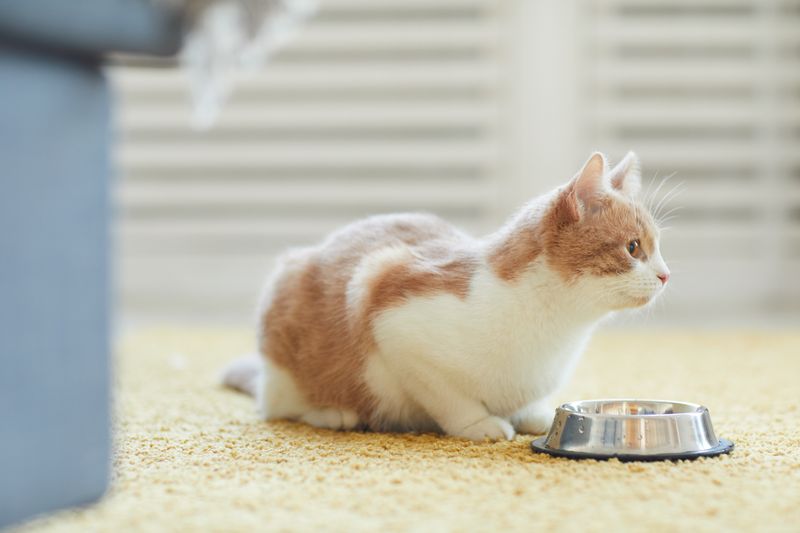
Food bowl untouched again? Stress significantly impacts feline appetite. When cats feel unsafe, their survival instincts prioritize vigilance over eating.
Wild cats wouldn’t eat when threatened, and this instinct persists in domestic cats. Prolonged appetite loss can lead to serious health issues like hepatic lipidosis, making this sign particularly concerning.
9. Excessive Vocalization
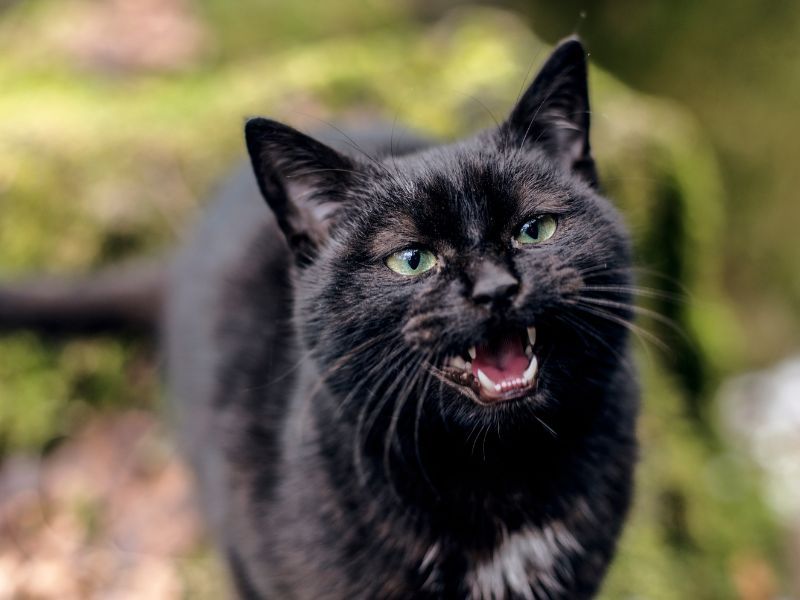
Midnight yowling sessions aren’t just about disturbing your sleep! Unusual increases in meowing, crying, or howling often indicate distress.
These vocalizations might be your cat’s desperate attempt to communicate discomfort. Senior cats especially may become more vocal when feeling insecure or when experiencing sensory changes that make their environment feel threatening.
10. Tense Muscles And Freezing
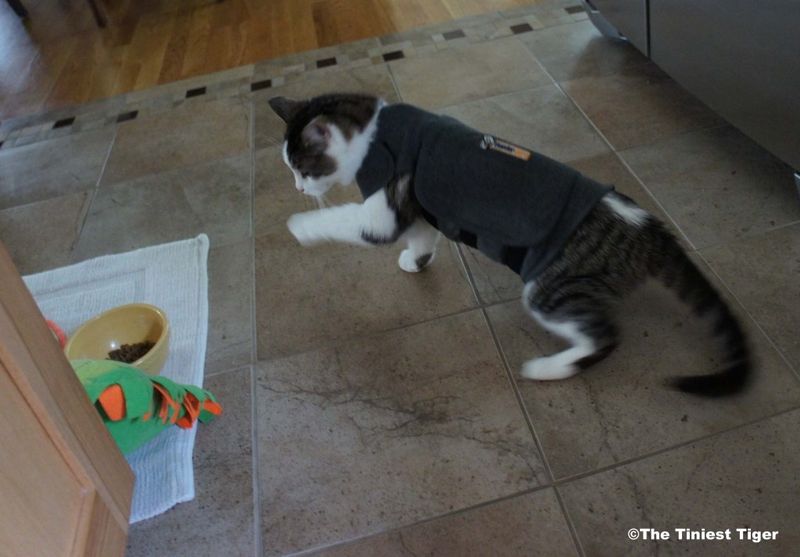
Spotted your cat doing a statue impression? Freezing in place with tense muscles indicates your cat is processing a potential threat.
This momentary paralysis allows them to evaluate danger before deciding whether to flee or fight. You’ll notice stiff legs, rigid body, and an intense, unblinking stare – all signs they’re feeling extremely unsafe.
11. Excessive Scratching Of Furniture
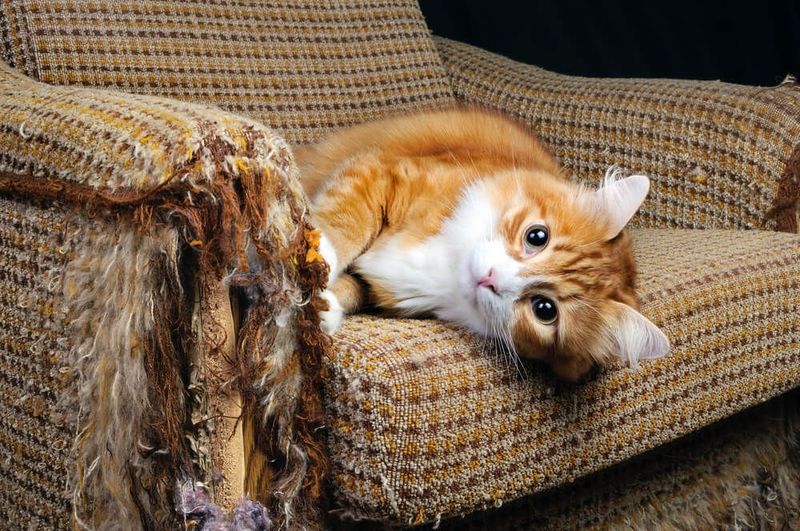
Shredded furniture appearing out of nowhere? Anxious cats often scratch excessively, leaving behind chaos.
Those paw scratches aren’t just random – they’re scented marks that help them feel more secure when their environment feels threatening.
12. Constant Vigilance
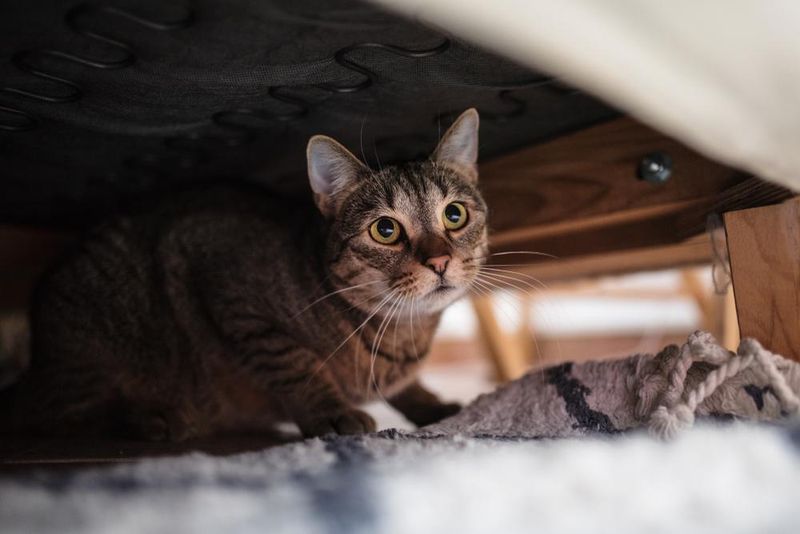
Remember how cats love napping? A cat that’s constantly alert – ears swiveling, eyes darting, startling at small sounds – is displaying hypervigilance.
This exhausting state of constant readiness indicates they don’t feel safe enough to relax. Even during rest periods, they may sleep in defensive positions with partially open eyes, ready to respond to threats.
13. Changes In Sleeping Patterns
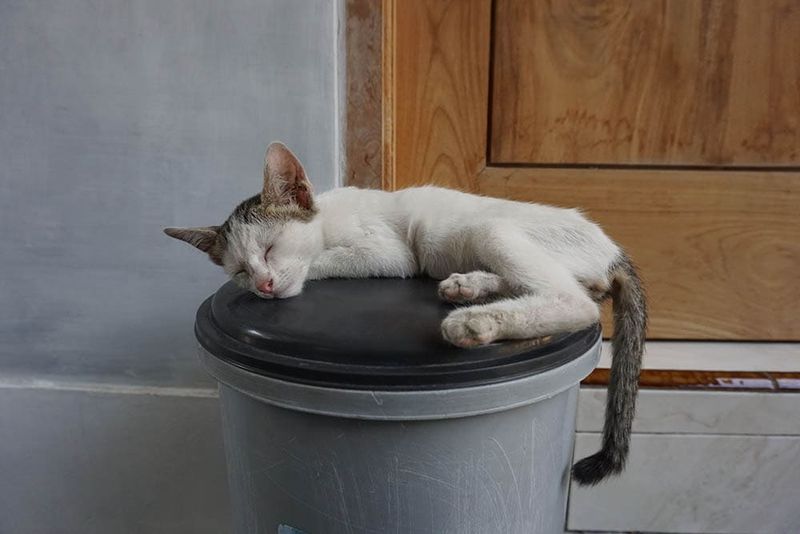
Suddenly sleeping in unusual spots? Location changes often indicate your cat no longer feels secure in favorite resting areas.
They might switch from open spaces to concealed spots like closets or under furniture. Some cats do the opposite – abandoning secluded spots for areas where they can monitor activity, sacrificing deep sleep for vigilance.
14. Excessive Shedding
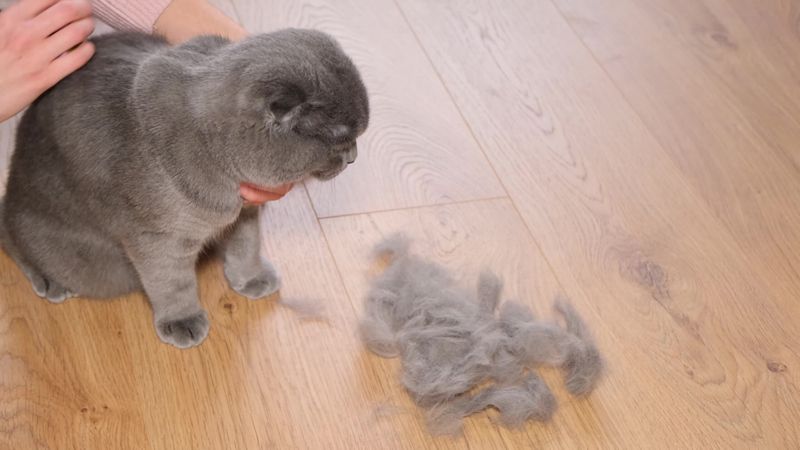
Fur tumbleweeds taking over your home? Stress can trigger abnormal shedding beyond seasonal changes.
The physiological response to anxiety affects hair follicles, causing more fur to release. You might notice clumps coming out during gentle petting or excessive fur on sleeping spots – a physical manifestation of your cat’s emotional distress.
15. Refusal To Use Cat Trees Or High Perches
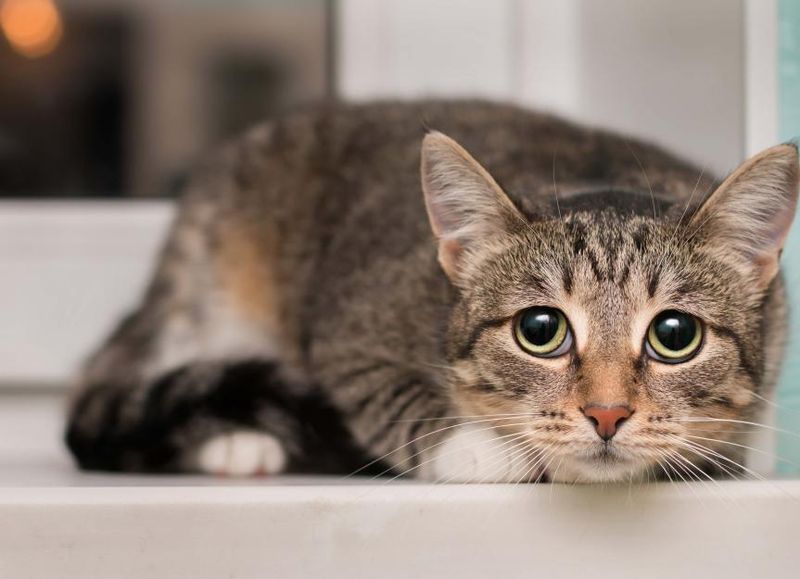
Missing your little climber? Cats naturally seek elevation for security, so abandoning high perches signals something’s wrong.
When feeling vulnerable, some cats avoid heights that would normally provide safety. This counterintuitive behavior happens because reaching elevated spaces requires momentary vulnerability. They may prefer ground-level hiding spots for quick escape routes.
16. Inappropriate Scratching Of People
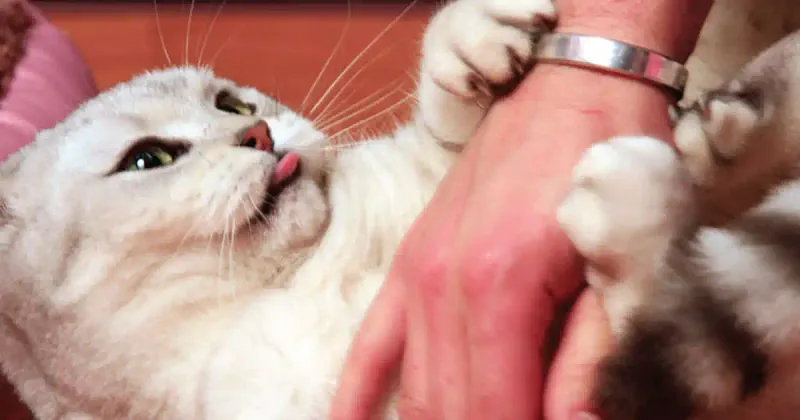
Gentle petting turning into sudden scratches? Fear might be the hidden trigger, not overstimulation. Cats feeling chronically unsafe have a lower tolerance for perceived threats, making even affectionate touches seem dangerous.
Subtle warning signs like a twitching tail or rippling skin can reveal rising anxiety before things escalate.
17. Redirected Aggression Toward Other Pets
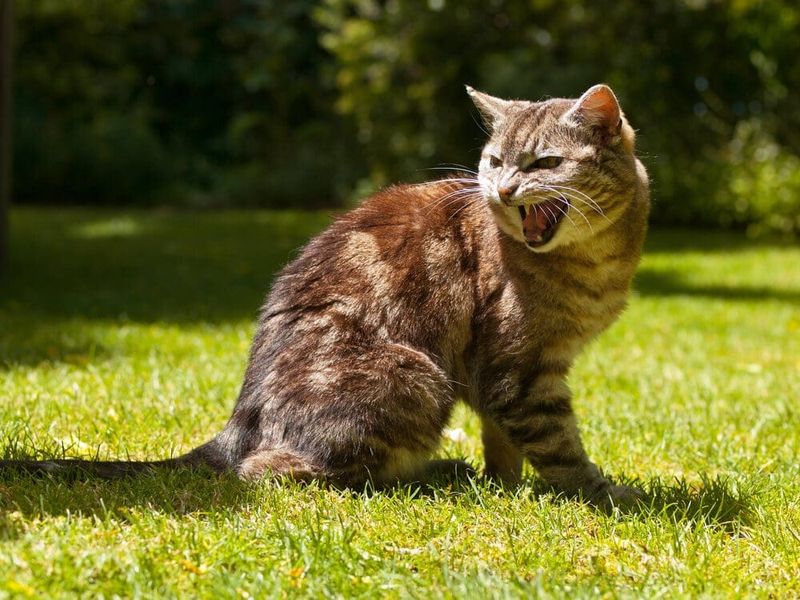
Formerly friendly pets suddenly fighting? When cats feel threatened but can’t confront the actual threat, they sometimes redirect aggression toward housemates.
This misplaced hostility can appear random and confusing. Your cat might attack another pet after seeing an outdoor cat through a window or hearing threatening noises they can’t escape from.

